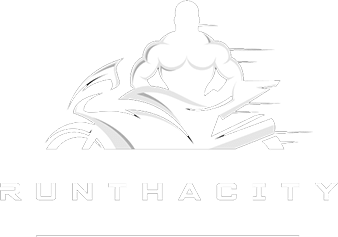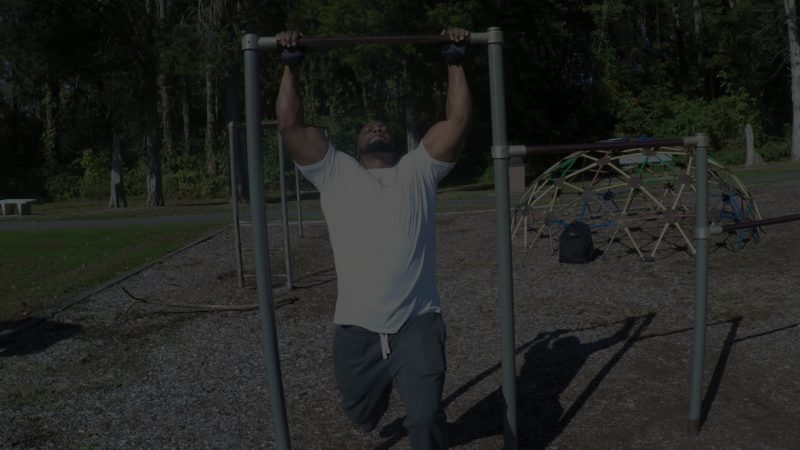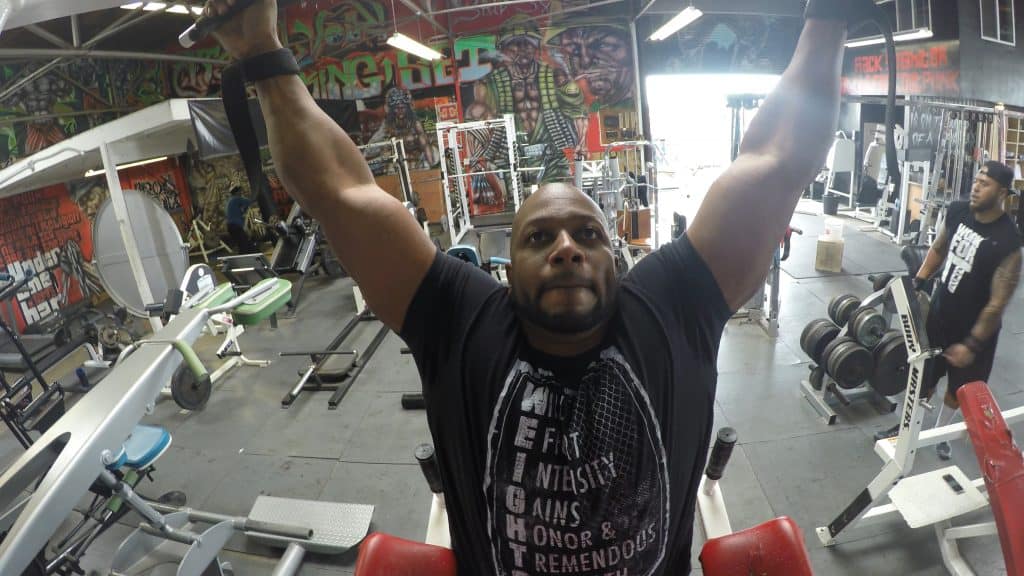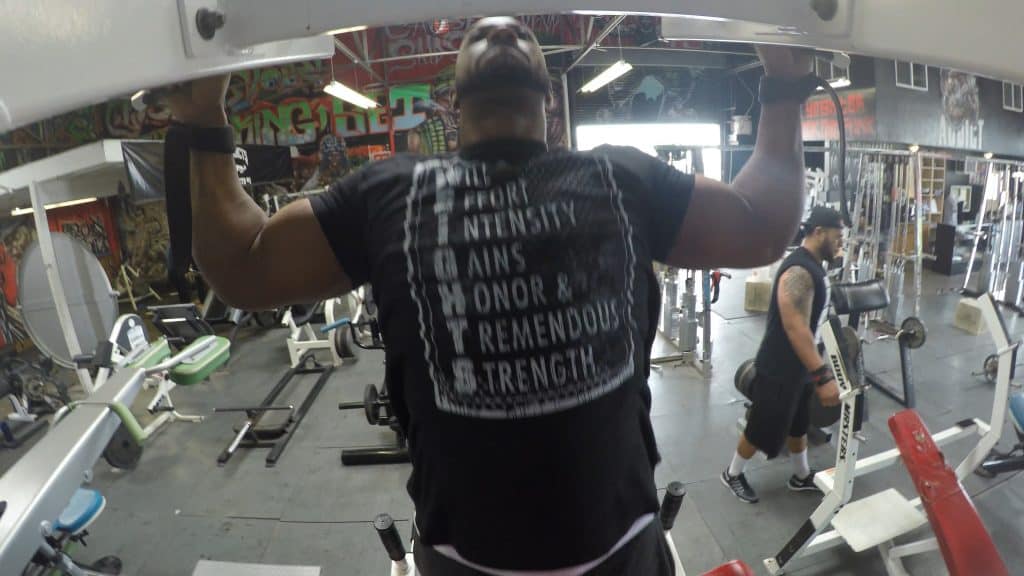Are you tired of complicated chest day routines that leave you exhausted but not seeing the results you want? You’re not alone. Many fitness enthusiasts struggle with finding the perfect balance of exercises to maximize chest growth.
What if you could simplify your chest workout while still achieving incredible gains? The solution might be simpler than you think: focusing on 20 sets of just one exercise. This approach not only streamlines your routine but also targets muscle growth in a highly effective way.
In this article, we’ll explore the benefits of dedicating 20 sets to a single chest exercise, the science behind muscle hypertrophy, and how this method can lead to significant strength and muscle gains. You’ll learn why volume is crucial, how to implement this strategy effectively, and the key advantages of this focused training approach.
Key Takeaways
- Simplicity and Focus: The 20-set approach simplifies your chest workout routine, enhancing focus and improving mind-muscle connection.
- Consistency and Progress: Repeatedly performing one exercise allows for better tracking of progress and leads to significant muscle and strength gains.
- Reduced Injury Risk: Mastering one exercise reduces the risk of injury by ensuring proper form and technique.
- Scientific Backing: High-volume training is supported by studies showing its effectiveness in promoting muscle hypertrophy and strength.
Comparison Table
20-Set Approach vs Traditional Chest Workout
Criteria | 20-Set Approach | Traditional Chest Workout |
|---|---|---|
Complexity | Simple, single exercise focus | Multiple exercises |
Time Efficiency | More efficient due to less setup time | Less efficient with various setups |
Progress Tracking | Easier with consistent exercise | Harder with varied exercises |
Injury Risk | Lower with focused form perfection | Higher with varied forms and weights |
Muscle Engagement | High due to repetitive targeting | Moderate with varied engagement |
Volume | High with 20 sets | Varies, often moderate |
The Science of Muscle Hypertrophy
Muscle Hypertrophy Explained: Muscle hypertrophy refers to the increase in muscle size achieved through exercise. This growth occurs when muscle fibers are subjected to stress, causing micro-tears that the body repairs and rebuilds stronger and larger. Two primary factors influence hypertrophy: mechanical tension and metabolic stress.
Why Volume Matters: High-volume training, such as performing 20 sets of one exercise, plays a critical role in muscle hypertrophy. Volume refers to the total amount of weight lifted during a workout session, which is a product of the number of sets, reps, and the weight used. High-volume workouts increase time under tension, leading to greater muscle damage and, consequently, more significant muscle growth.
Supporting Studies: Numerous studies support the effectiveness of high-volume training. For instance, research published in the Journal of Strength and Conditioning Research found that higher training volumes are associated with greater muscle hypertrophy. Another study in the Journal of Applied Physiology highlighted that volume is a key determinant of muscle growth, with higher volumes leading to more substantial gains.
Benefits of 20 Sets for Chest Training
Simplicity and Focus: Focusing on one exercise for 20 sets simplifies your workout routine, allowing you to concentrate on perfecting your form and maximizing muscle engagement. This focused approach can lead to better mind-muscle connection, which is crucial for effective training.
Consistency and Progress: Performing the same exercise consistently allows you to track progress more accurately. Over time, this consistency can lead to significant strength and muscle gains as your body adapts and becomes more efficient at the exercise.
Reduced Injury Risk: Mastering one exercise reduces the risk of injury compared to varied routines that might introduce poor form and unfamiliar movements. By focusing on perfecting your technique, you minimize the chances of strain and overuse injuries, making your workouts safer and more effective.
By incorporating 20 sets of a single exercise into your chest day routine, you can achieve remarkable muscle growth, improved strength, and a simplified, effective workout. This approach leverages the principles of muscle hypertrophy and volume to deliver results that more complex routines might not achieve. Stay tuned as we dive deeper into how to implement this strategy and maximize your chest gains.
Detailed Breakdown: The 20-Set Chest Exercise
Exercise Choice: Incline Bench Press
Recommendation: The Incline Bench Press is an ideal exercise for this 20-set approach. It targets the upper chest muscles (pectoralis major) effectively, which are often underdeveloped compared to the lower chest. This exercise also engages the shoulders and triceps, providing a comprehensive upper body workout.
Why Incline Bench Press?
- Upper Chest Activation: Incline positioning emphasizes the upper pectoral muscles, creating a balanced and fuller chest appearance.
- Versatility: Suitable for various fitness levels, the incline bench press can be modified with different weights and techniques.
- Form and Safety: Easier to maintain proper form compared to other chest exercises, reducing the risk of lower back strain.
Proper Form and Technique
Set-Up:
- Adjust the bench to a 30-45 degree incline.
- Lie back on the bench with feet flat on the floor and your back firmly against the bench.
- Grip the barbell with hands slightly wider than shoulder-width apart.
Execution:
- Start Position: Lift the bar off the rack and hold it directly above your chest with arms fully extended.
- Lowering Phase: Inhale and slowly lower the bar to your upper chest, keeping your elbows at a 45-degree angle to your body.
- Pressing Phase: Exhale and press the bar back up to the starting position, focusing on contracting your chest muscles.
Common Mistakes:
- Arching the Back: Keep your back flat against the bench to avoid lower back strain.
- Flaring Elbows: Maintain a 45-degree angle to prevent shoulder injury.
- Bouncing the Bar: Control the descent to maximize muscle engagement and avoid using momentum.
Progressive Overload
Tips for Progressive Overload:
- Increase Weight: Gradually add weight in small increments (2.5-5 lbs) once you can comfortably complete all 20 sets with good form.
- Add Reps: Start with a manageable number of reps per set and slowly increase the reps over time.
- Adjust Rest Periods: Reduce rest periods slightly as you progress to increase intensity.
Implementation Strategy
Warm-Up
Importance of Warming Up:
- Injury Prevention: Proper warm-up prepares muscles and joints for the intense workout, reducing the risk of injury.
- Performance Enhancement: Increases blood flow to the muscles, improving performance.
Warm-Up Routine:
- Dynamic Stretches: Arm circles, shoulder rotations, and torso twists (5 minutes).
- Light Cardio: Jumping jacks or brisk walking (5 minutes).
- Warm-Up Sets: 2-3 sets of light bench presses to activate the chest muscles.
Set Structure
How to Structure the 20 Sets:
- Initial Sets: Start with lighter weight for the first 5 sets to properly warm up the muscles.
- Middle Sets: Gradually increase the weight for sets 6-15, ensuring each set is challenging but maintainable.
- Final Sets: Use a consistent, slightly lighter weight for the last 5 sets to focus on muscle fatigue and endurance.
Rest Periods
Optimal Rest Periods:
- Between Sets: 60-90 seconds rest between sets to allow partial recovery while keeping the muscles under constant tension.
- Between Phases: If breaking the 20 sets into phases, take a longer rest (2-3 minutes) after completing 10 sets.
Enhancing Results with Proper Nutrition
Pre-Workout Nutrition
What to Eat Before the Workout:
- Carbohydrates: Provide energy. Examples include oatmeal, whole-grain toast, or a banana.
- Protein: Supports muscle function. Examples include Greek yogurt, a protein shake, or eggs.
- Timing: Eat 30-60 minutes before your workout to ensure the nutrients are available during exercise.
Post-Workout Recovery
Importance of Post-Workout Nutrition:
- Muscle Repair: Protein is crucial for repairing and building muscles.
- Glycogen Replenishment: Carbohydrates help replenish glycogen stores depleted during the workout.
Post-Workout Meal:
- Protein: Aim for 20-30 grams of protein. Examples include a protein shake, chicken breast, or a protein bar.
- Carbohydrates: Pair with a similar amount of carbs. Examples include rice, sweet potatoes, or a fruit smoothie.
Supplement Recommendations
Effective Supplements:
- Whey Protein: Fast-absorbing protein to support muscle repair and growth.
- Creatine Monohydrate: Enhances strength and performance.
- BCAAs (Branched-Chain Amino Acids): Reduce muscle soreness and support recovery.
- Omega-3 Fatty Acids: Reduce inflammation and support overall health.
Timing and Dosage:
- Whey Protein: 20-30 grams post-workout.
- Creatine: 5 grams daily, taken post-workout.
- BCAAs: 5-10 grams before or during workouts.
- Omega-3s: 1-2 grams daily with meals.
By focusing on 20 sets of the Incline Bench Press, you can maximize chest growth through simplicity, consistency, and targeted muscle engagement. Proper form, progressive overload, and strategic nutrition will enhance your results, making your chest day both effective and efficient.
Tracking Progress and Adjusting the Program
Measuring Success
Progress Photos:
- Frequency: Take photos every four weeks to visually track changes.
- Angles: Capture images from the front, side, and back to get a comprehensive view of your progress.
- Consistency: Use the same lighting, location, and pose for accurate comparisons.
Body Measurements:
- Areas to Measure: Chest, waist, hips, arms, and thighs.
- Tools: Use a flexible tape measure for accuracy.
- Frequency: Measure every two weeks to monitor changes closely.
Strength Gains:
- Tracking Weight Lifted: Record the weights, sets, and reps for each workout session.
- Performance Indicators: Note improvements in endurance and overall strength, such as increased reps or heavier weights.
Additional Metrics:
- Body Fat Percentage: Consider using a body fat scale or professional measurements.
- Fitness Tests: Periodically perform fitness tests, such as push-up or plank endurance, to gauge improvements in strength and stamina.
Making Adjustments
Identifying Plateaus:
- Signs: Stagnant progress in strength, body measurements, or visual changes.
- Duration: If no progress is seen over four weeks, it’s time to adjust.
Adjustment Strategies:
- Change Rep Ranges: Alternate between high reps (15-20) and low reps (4-6) to shock the muscles.
- Vary Exercises: Introduce new exercises or variations to target the muscles differently.
- Increase Intensity: Incorporate techniques like supersets, drop sets, or tempo changes.
- Rest and Recovery: Ensure adequate rest and incorporate active recovery days to prevent overtraining.
Deloading
When to Deload:
- Frequency: Every 6-8 weeks, or when experiencing persistent fatigue, soreness, or decreased performance.
- Indicators: Symptoms of overtraining, such as chronic muscle soreness, irritability, and poor sleep.
How to Deload:
- Reduce Intensity: Lower the weights to 50-60% of your usual load.
- Decrease Volume: Cut the number of sets and reps by half.
- Active Recovery: Focus on light, low-impact activities like yoga or swimming.
- Duration: Typically, a deload week lasts 5-7 days before resuming normal training.
Conclusion
Recap Benefits:
- Simplicity and Focus: The 20-set approach simplifies your workout and enhances the mind-muscle connection.
- Consistency and Progress: Consistent repetition of one exercise leads to significant muscle and strength gains.
- Reduced Injury Risk: Mastering one exercise minimizes injury risk by ensuring proper form and technique.
Encouragement: Embark on the 20-set chest workout journey with confidence. Consistency, dedication, and proper execution will lead to remarkable results. Remember, every rep and set brings you closer to your fitness goals.
Call to Action: Join the 20-set challenge today and share your progress on social media using the hashtag #20SetChallenge. Subscribe to our newsletter for exclusive tips and explore other fitness articles on RunThaCity.com to continue your fitness journey.
FAQs: The 20-Set Chest Workout
You Might also like
-
The Best Stretching Exercises for Sportbike Riders
Riding a sportbike can be an exhilarating experience, offering a sense of freedom and excitement. However, it can also be demanding on the body, particularly on the muscles and joints used most during rides. To ensure both safety and enjoyment while riding, incorporating stretching exercises into your routine is essential. Below, we outline the best stretching exercises specifically designed for sportbike riders, aiming to enhance flexibility, reduce muscle stiffness, and prevent injury.
Key Takeaways
- Stretching improves flexibility and range of motion, essential for comfortable and safe riding.
- Regular stretching can prevent muscle stiffness and soreness, particularly in areas heavily used during rides such as the wrists, shoulders, and legs.
- Incorporating exercise stretch bands can enhance stretching routines, offering resistance that can help improve overall flexibility.
Comparison Table: Stretching vs. No Stretching for Sportbike Riders
Criteria With Stretching Without Stretching Flexibility Improved Decreased Muscle Soreness Reduced Increased Injury Risk Lowered Elevated Riding Comfort Enhanced Compromised Recovery Time Shortened Lengthened Why Stretching is Crucial for Motorcycle Riders
Before delving into the specific exercises, it’s important to understand why stretching is so beneficial for motorcycle riders. Stretching can improve range of motion, decrease the risk of muscle soreness and injuries, and enhance your overall riding experience by keeping the body flexible and prepared for the demands of riding.
Best Stretches for Motorcycle Riding
- Wrist Extensor and Flexor Stretches
- Purpose: Alleviates wrist stiffness and prevents arm pump.
- How to Do: Extend your arm, palm down, and gently pull the fingers towards your body with the other hand. For the flexor stretch, extend your arm, palm up, and pull the fingers towards your body.
- Shoulder and Chest Openers
- Purpose: Opens the chest and shoulders, counteracting the forward-leaning posture.
- How to Do: Interlace your fingers behind your back, straighten your arms, and lift your chest upwards, feeling the stretch in your shoulders and chest.
- Hip Flexor Lunges
- Purpose: Loosens the hip flexors, crucial for maintaining a comfortable riding position.
- How to Do: Step forward into a lunge, keeping the back leg straight and the front leg at a 90-degree angle. Push your hips forward.
- Quadriceps Stretch
- Purpose: Stretches the front thigh muscles, which can become tight from the riding position.
- How to Do: Standing on one leg, pull the other foot towards your buttock, keeping the knees together.
- Seated Hamstring Stretch
- Purpose: Increases flexibility in the back of the legs.
- How to Do: Sit on the ground, extend your legs, and reach towards your toes.
- Glute and Piriformis Stretch
- Purpose: Relieves tightness in the buttocks and lower back.
- How to Do: Sitting on the floor, cross one leg over the other and gently pull the knee towards the opposite shoulder.
Incorporating Stretch Bands for Enhanced Flexibility
Exercise stretch bands can be a valuable tool for motorcycle riders looking to enhance their stretching routine. They provide resistance, increase the effectiveness of stretches, and help improve overall flexibility. Here are a couple of stretches using exercise bands:
- Band-Assisted Hamstring Stretch: Lie on your back, loop a band around your foot, and gently pull back, keeping the leg straight.
- Shoulder Stretch with Band: Hold a stretch band in both hands, lift your arms over your head and behind your back, stretching the shoulders.
FAQs on Stretching for Motorcycle Riding
- How often should I stretch?
- Ideally, before and after each ride to warm up and cool down the muscles.
- Can stretching improve my riding performance?
- Yes, by enhancing flexibility and reducing muscle fatigue.
- Are there stretches to prevent lower back pain from riding?
- Yes, hip flexor stretches and lower back stretches can help alleviate and prevent lower back pain.
- Why is stretching important for motorcycle riders? S
- tretching improves flexibility and reduces the risk of muscle stiffness and injuries, making riding more comfortable and enjoyable.
- How often should I stretch for the best results?
- Ideally, before and after each ride to prepare your muscles for the ride and to aid in recovery afterwards.
- Can stretching help with lower back pain from riding?
- Yes, specific stretches targeting the lower back and hip flexors can alleviate and prevent lower back pain.
- Are exercise stretch bands beneficial for riders?
- Yes, they add resistance to stretches, effectively improving flexibility and strength in key muscle groups.
- What are the best stretches for sportbike riders?
- Wrist, shoulder, hip flexor, quadriceps, hamstring, and glute stretches are highly beneficial.
- How long should each stretch be held?
- Each stretch should be held for at least 30 seconds to maximize its effectiveness.
Conclusion
Incorporating these stretching exercises into your routine can significantly enhance your motorcycle riding experience. Not only do they prepare your body for the ride, but they also help prevent post-ride stiffness and soreness. Remember, consistency is key to seeing improvements in flexibility and to enjoy a more comfortable and enjoyable ride.
For more tips on fitness and motorcycle riding, check out our Fitness Blog at RunTheCity. Whether you’re a seasoned rider or just starting, understanding and practicing these stretches can lead to a healthier, more enjoyable riding experience.
-
Over 100 Motivational Fitness Quotes With Images
Are you looking for the perfect motivation quote, meme, or image? Click to find the perfect one for your day! Feel free to download, share, etc!!
-
RunThaCity’s 300 Pullup Challenge: Ultimate Pullup Training
There is nothing that says you need to be big to be strong. Even if your build is thin, you can build muscle that gives you more strength. Your size is no indication of how strong you actually are. One way to build better muscle is by mastering the pullup. Some trainers say that the pullup puts smaller-framed body builders on a level playing field with those with large frames. You may be able to deadlift hundreds of pounds, but if you cannot meet the 300 Pullup Challenge, you’re not really as strong as you think.
300 Pullup Challenge
The 300 Pullup Challenge is relatively simple. The goal is to complete 300 pullups in one hour. The easiest way to do this is by breaking them down into sets of 10. Complete 30 sets of 10 in one hour and you’ve conquered the 300 Pullup Challenge. The only equipment you need is a pullup bar, which you can probably find on a local playground, music to get you moving and a pair of gloves to protect your hands. Do ten pullups in quick succession, stop, walk around for 30 seconds to a minute, then do the second set. Continue until you have completed 30 sets of 10.
300 Pull-up Challenge Workout:
Feel free to do these in any order you choose.
Pullups Keep You Honest
One of the best things about pullups is that they keep you honest. Many bodybuilders claim that a pull-up is an unfair test for larger people, but this is far from true. A 250-pound person should be able to master the 300 Pullup Challenge as easily as someone who weighs half as much. The only reason pull-ups may be difficult for a larger person is if they have excess body fat. If you find that your form is lacking or that you are having difficulty completing the challenge, you may need to include pull-ups in your workout more often.
Pullup Bottom Position Pullup Top Position Watch Your Form
Before you attempt to conquer the 300 Pullup Challenge, make sure that you can do one rep with proper form. Grab the bar tightly, keep your legs straight and brace your body as you lift with your arms to pull your chin over the bar. Your torso should not fall too far forward or backward. You want to keep your body as tight as possible. You can use an underhand, overhand or neutral grip, but be sure to come to a full extension at the bottom of each rep. You also want to be sure your chin goes above the bar at the top of the reps.
How many pull ups should i do a day to see results?
I regularly perform 5 sets of 10 as a warm up to most of my workouts.
Work toward the 300 Pullup Challenge once each week and be sure to give yourself plenty of recovery time between sessions. Continue working other muscles during your week, but keep in mind that pullups will work your back and biceps, so you may be able to eliminate some of those exercises during the week. For more tips on getting the most out of your workout, subscribe to my YouTube Channel.










